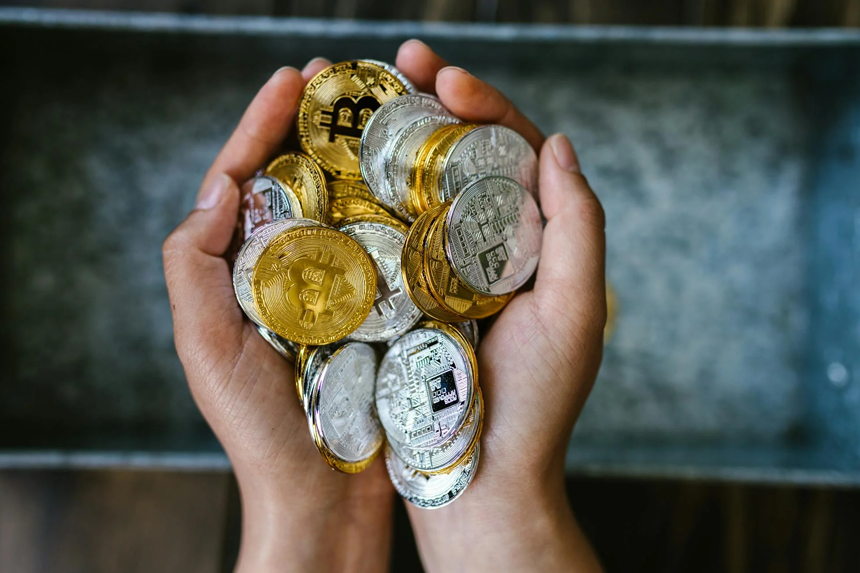President Donald Trump has proposed plans to create a Crypto Strategic Reserve, including five major cryptocurrencies: Bitcoin (BTC), Ethereum ( ETH), XRP, Solana (SOL), and Cardano (ADA), so positioning the United States as the “Crypto Capital of the World.” This declaration caused a notable increase in the value of these digital assets and spurred a lot of debate on the direction cryptocurrencies might take in the United States and around the world.
Trump’s declaration comes amid a period of volatility in the Bitcoin market as economic factors and legal uncertainties influence the value of digital assets. The government wants to confirm America’s leadership in blockchain technology and crypto innovation by acting boldly here. The choice is expected to have a long-lasting effect on the financial markets and open the path for upcoming national digital asset reserves.
What is the Crypto Strategic Reserve?
The Crypto Strategic Reserve is a planned U.S. government initiative to construct a national stockpile of certain cryptocurrencies. The reserve seeks to help the crypto sector governmentally and strengthen the country’s position in the fast-changing digital asset scene. President Trump’s vision is to elevate the U.S. to a leading role in the global cryptocurrency market by integrating these digital assets into national financial strategies.
Although specifics on the architecture and purpose of the Crypto Strategic Reserve are still lacking, experts hypothesize that it may involve leveraging government-owned cryptocurrencies as a financial buffer, much as gold reserves have been used traditionally. This reserve’s concept is to guarantee that, especially as more nations start using cryptocurrencies as part of their financial systems, the United States stays leading edge in digital financial assets.
By reducing price swings and guaranteeing that these assets have inherent government-backed value, the reserve might also help to improve the stability of the crypto market. How the government intends to purchase, keep, and apply these digital assets inside the larger economic framework is still to be seen.
Which currencies are on reserve?
First announcing XRP, Solana (SOL), and Cardano (ADA) inclusion in the Crypto Strategic Reserve was President Trump. Later on, he included Ethereum (ETH) and Bitcoin (BTC), appreciating their important parts in the crypto scene. This collection of digital resources covers a wide spectrum and has special uses for each.
The biggest and most identifiable cryptocurrency, Bitcoin (BTC), is digital gold and a store of value. Ethereum (ETH) drives smart contracts and distributed applications. XRP helps low-cost, quick cross-border payments. Solana (SOL) is known for its high-performance blockchain, whereas Cardano (ADA) focuses on scalability and sustainability.
Including these five main cryptocurrencies helps the government to show a wider embrace of digital assets as part of the national financial policy. Depending on changes in regulations and market dynamics, some analysts believe that other cryptocurrencies might be included in the reserve going forward.
How did the market react to the announcement?
The Bitcoin market responded promptly to President Trump’s announcement. The value of XRP jumped from $2.23 to $2.99, therefore raising its market capitalization by $44 billion. Cardano’s price a rose from $0.68 to over $1 while Solana’s price jumped from $140 to $168. With a 9% increase, Bitcoin rose to about $93,000 and added $166 billion to its market capitalization. Ethereum, too, saw a substantial gain in value.
Rising investor confidence drove this boom since many saw the government’s support of these digital assets as a major step toward general acceptance. particular institutional investors have responded favorably to the news; some analysts believe this will result in more institutional involvement in the crypto space and more legislative clarity.
Beyond price surges, trading volume for these cryptocurrencies also spiked as more investors scrambled to buy into assets expected to gain further governmental support. This evolution emphasizes how much government policies and sponsorships might affect the crypto markets.
How does this line up with President Trump's past posture on cryptocurrencies?
This effort represents a major change in President Trump’s attitude on cryptocurrency. In a 2021 interview, he had been scathing and called Bitcoin a “scam”. But his latest activities—including the release of his meme coin, $Trump—show evidence of a fresh enthusiasm for the crypto market. This turn implies a calculated action to fit the increasing influence and acceptance of digital assets.
Trump’s government appears to be realizing the growing role of digital currencies in the global financial system. Some political experts think this action is meant to appeal to the crypto community especially as the 2024 election cycle approaches. Embracing cryptocurrency helps the government project itself as pro-innovation and pro-business, appealing to both bigger financial institutions and retail investors.
What might the Crypto Strategic Reserve's effects be?
Establishing a Crypto Strategic Reserve could have broad consequences. It might offer the crypto sector a safety net, therefore fostering more innovation and investment. Concerns have been expressed, meanwhile, over the reserve’s operations and possible government action in the crypto markets. Critics contend that such a reserve might lead to market distortions and dispute the government’s role in controlling digital assets.
One issue is the possibility of government control of crypto values using deliberate asset purchase or selling. Should the reserve be utilized as a tool for influencing market movements, it might generate synthetic price swings impacting institutional and individual investors alike.
Additionally, doubts remain regarding how these digital assets will be obtained. Will the government mostly rely on seized bitcoins from unlawful activity or buy them straight from the open market? The responses to these inquiries would help to ascertain how the reserve influences the larger crypto economy.
Positively, the reserve might give cryptocurrencies more credibility, which would encourage more acceptance among companies and financial institutions. If administered clearly and efficiently, it might become a critical aspect of the U.S. financial infrastructure in the digital age.
For the Crypto Strategic Reserve, what more actions are planned?
The forthcoming Crypto Summit at the White House should reveal more specifics on the Crypto Strategic Reserve. President Trump has named David Sacks as the czar for cryptocurrency and artificial intelligence, indicating a concentrated push to integrate these technologies into national policy. The summit is expected to cover operational concerns of the reserve, legal frameworks, and approaches to promote innovation while guaranteeing market stability.
Attending the summit, where talks will probably center on regulatory control, cybersecurity measures for protection of digital assets, and the possible use of blockchain technology in government operations, many industry experts and legislators are expected to attend.
Other countries can think about implementing comparable policies as the U.S. government moves with the Crypto Strategic Reserve. One thing is certain: the interaction between government policy and the bitcoin sector is changing quickly, and whether this action turns out to be a game-changer or a divisive policy decision remains to be seen.
Reflecting a larger trend of institutional acceptance and acknowledgment of digital assets, this development highlights the changing interaction between government policy and the Bitcoin sector. Investors and stakeholders will be closely observing how this new project develops as the terrain of regulations keeps changing.








